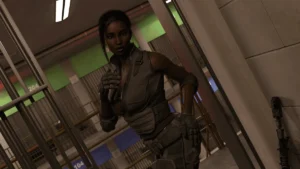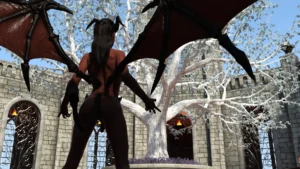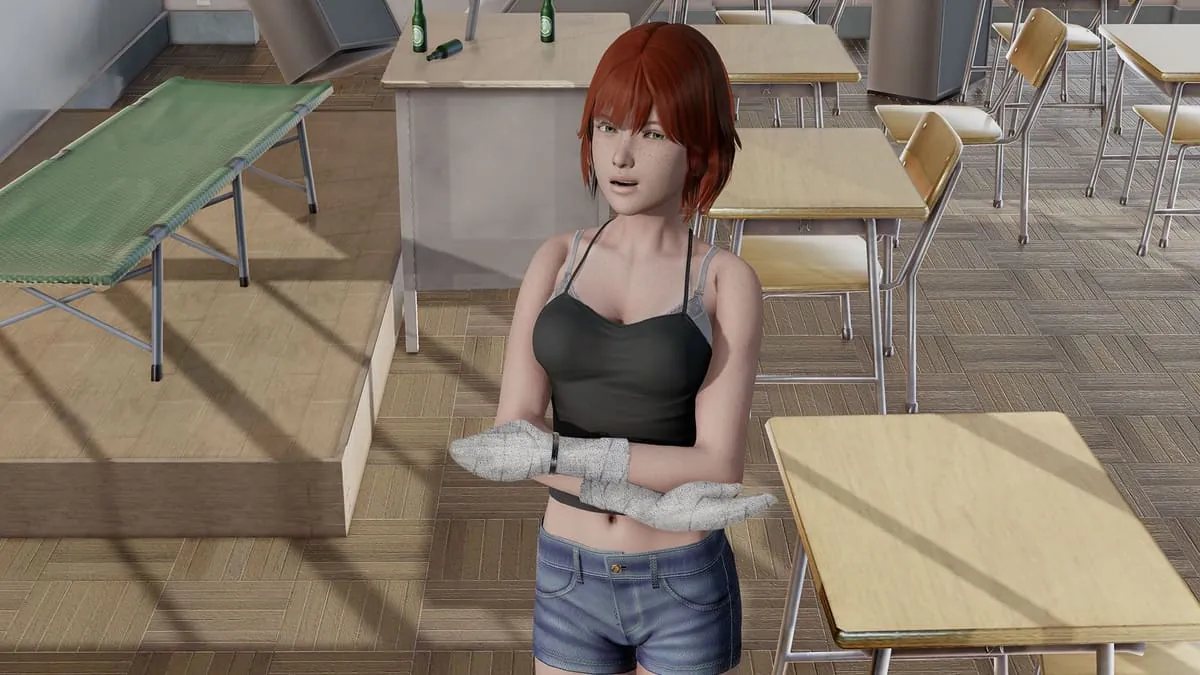
Inner Growth
Play Inner Growth
Inner Growth review
Explore the decision-driven narrative experience of this immersive visual novel adventure
Inner Growth stands out as a narrative-driven visual novel that puts player choice at the center of the experience. Developed by Morally Purple, this game follows Thalna, a protagonist navigating between two vastly different worlds with consequences that shape every aspect of the story. Whether you’re interested in understanding the game’s mechanics, exploring its unique character system, or learning about the decision-making framework that defines the experience, this guide covers everything you need to know about what makes Inner Growth a compelling choice for players seeking meaningful storytelling.
Understanding Inner Growth: Story, Setting & Protagonist
Who is Thalna? Meet the Game’s Unique Protagonist
Let me tell you about Thalna, the Inner Growth protagonist you’ll be guiding through this incredible journey. 🫅 I remember the first time I booted up the game and met her – she wasn’t your typical heroic figure, and that’s exactly what makes her so compelling. Thalna begins her story as the spoiled princess of the underworld, accustomed to having every whim catered to and every desire instantly fulfilled. She’s essentially the underworld’s equivalent of that trust fund kid who’s never heard the word “no,” and her journey from that point is nothing short of transformative.
What makes the Thalna character story so fascinating is how her privileged background directly shapes her personality and choices. 🎭 Think about it: when you’ve never faced consequences, you develop a certain… let’s call it boldness. Her dialogue options early in the game reflect this – she’s sharp-tongued, impatient, and genuinely believes the world owes her something. I found myself both frustrated by her attitude and completely understanding where it came from. Her character development isn’t about becoming someone new, but about uncovering the person she was always meant to be beneath all that royal conditioning.
Here’s a perfect example of how her background plays out in the game’s decision-driven storyline: early on, you encounter a human merchant who refuses to give Thalna what she wants. The spoiled princess in her immediately pushes for intimidation and threats – after all, that’s always worked before. But the growing part of her, the part you get to nurture through your choices, might suggest negotiation or even (gasp!) compromise. Watching her navigate situations where her usual tactics fail creates some of the game’s most authentic and rewarding moments.
The brilliance of this character-driven gameplay lies in how Thalna’s aristocratic upbringing becomes both her greatest weakness and her unexpected strength. 👑 Her confidence, though initially arrogant, can be channeled into genuine leadership. Her high expectations of others can transform into holding people to their best potential. Playing through her story feels less like controlling a character and more like collaborating on her evolution – and that’s what makes the Inner Growth protagonist experience so uniquely personal.
Pro Tip: Pay close attention to Thalna’s internal monologue during decision moments. The game subtly hints at her true feelings beneath the royal bravado, guiding you toward choices that align with genuine growth rather than performative change.
The Dual World Setting: Underworld vs. Human Realm
The underworld setting game provides one of the most fascinating backdrops I’ve experienced in a story-based adventure game. 🌋 Imagine a realm where power isn’t just political – it’s tangible, flowing through the very architecture and social structures. Thalna’s home is both literally and metaphorically underground, a place of ancient traditions, dark beauty, and rigid hierarchies where she comfortably sat at the top. The art direction here is stunning, with glowing crystals illuminating Gothic palaces and shifting landscapes that reflect the realm’s magical nature.
Then there’s the human realm – and what a contrast it is! ☀️ Stepping into this world for the first time alongside Thalna was a genuine shock to my system, and I was just observing through a screen. Where the underworld is predictable in its structure (brutal, but predictable), the human realm is chaotic, vibrant, and messy. Sunlight actually exists here! People laugh openly in streets, form connections based on emotion rather than power, and generally operate with a freedom Thalna has never known. The game’s visual novel narrative shines in these moments of cultural collision.
What makes this underworld setting game so brilliant is how the environment actively participates in the storytelling. The underworld’s oppressive grandeur mirrors Thalna’s internal prison of expectation, while the human realm’s unpredictable beauty reflects the terrifying possibility of authentic self-discovery. I found myself making different choices based on which realm I was in – becoming more cautious and strategic in the familiar underworld, and more experimental and open in the bewildering human world.
| Underworld Realm | Human Realm |
|---|---|
| Structured, hierarchical society | Chaotic, egalitarian communities |
| Power determines value | Connection determines value |
| Dark, controlled environments | Bright, unpredictable landscapes |
| Familiar to Thalna (comfort zone) | Alien to Thalna (growth zone) |
This dual-world structure creates constant narrative tension that drives the entire visual novel narrative forward. 🎨 Will Thalna reject her heritage completely? Will she try to impose underworld values on human problems? Or will she forge something entirely new from both experiences? The game doesn’t give you easy answers, but it provides the most fascinating playground to explore these questions through its decision-driven storyline.
Plot Overview: What Drives the Narrative Forward
So what actually happens in this rich world with its complicated heroine? 🤔 The core plot kicks off when political upheaval in the underworld forces Thalna to flee to the one place she’s been taught to scorn: the human realm. This isn’t a voluntary journey of self-discovery – it’s a desperate exile that strips her of status, power, and identity in one fell swoop. I can’t stress enough how effectively the game makes you feel this loss alongside her. The visual novel narrative puts you right in her designer shoes as she faces a world that doesn’t care about her title.
The brilliance of this story-based adventure game lies in how it intertwines external survival with internal transformation. 🧭 Your initial decisions focus on basic needs – finding shelter, securing food, understanding human customs without revealing your otherworldly nature. But these practical challenges quickly become metaphors for Thalna’s larger journey. Every interaction, no matter how small, presents an opportunity to either cling to her old worldview or embrace a new way of being. The decision-driven storyline ensures that no choice feels trivial.
What surprised me most about the Thalna character story was how deeply the game explores themes of power dynamics and sexual awakening. 💫 These aren’t treated as separate narrative threads but as interconnected aspects of her overall coming-of-age. As she navigates human relationships without her royal authority, she discovers different forms of power – personal agency, emotional intelligence, and the courage to be vulnerable. Her romantic and sexual experiences (which you can guide through your choices) become powerful metaphors for consent, mutual respect, and claiming ownership of one’s desires versus performing expected roles.
The narrative structure creates this beautiful push-and-pull throughout the entire visual novel narrative. 🔄 Just when Thalna starts finding her footing in the human world, underworld politics inevitably intrude, forcing her to reconcile her past with her present. I found myself facing agonizing choices – protect new human friends using underworld tactics, or risk their safety by sticking to newly-formed moral principles? Return to claim her birthright, or build something more meaningful from scratch? These aren’t simple good/evil binaries, but genuinely complex ethical dilemmas.
Here’s what makes the replay value so incredible in this story-based adventure game:
– Your choices genuinely reshape Thalna’s personality, not just story outcomes
– Different relationship paths unlock unique narrative perspectives
– The balance Thalna strikes between her dual heritages creates distinct ending variations
– Minor characters live or die based on early decisions, dramatically altering later scenes
The Inner Growth protagonist journey culminates in a finale that feels both earned and surprising. 🏆 Without spoiling anything, I’ll say that my first completion left me genuinely emotional – not because of dramatic plot twists, but because I watched this “spoiled princess” I initially struggled to like transform into someone complex, resilient, and beautifully human (in all the best ways). The Thalna character story remains one of the most authentic portrayals of personal transformation I’ve experienced in any medium, proving that the most epic battles are often the quiet ones we fight within ourselves.
Inner Growth represents a compelling choice for players seeking a narrative-driven experience that prioritizes meaningful decision-making and character development. The game’s strength lies in its commitment to consequences—every choice genuinely shapes your journey through both the underworld and human realm. With its unique protagonist, diverse cast of characters, and branching storyline, Inner Growth offers substantial replay value as different decisions lead to entirely different outcomes. The visual quality and smooth animations create an immersive atmosphere that supports the game’s exploration of complex themes. Whether you’re drawn to choice-based narratives, character-driven stories, or immersive world-building, Inner Growth delivers a thoughtfully crafted experience that respects player agency while maintaining narrative coherence. If you appreciate games where your decisions truly matter and where personal growth intertwines with the story itself, this game deserves a place in your collection.





















